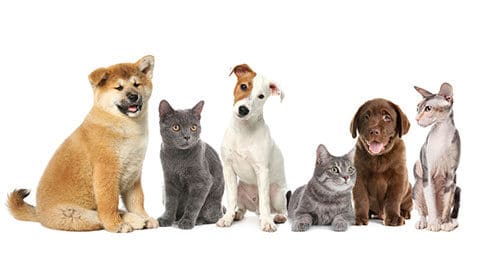Like Presidents, Dogs May Go Gray When Stressed
A new study, co-authored by author and scientist Temple Grandin and published in the journal Applied Animal Behaviour Science explores whether anxiety and impulsiveness may contribute to premature graying in dogs.
The research focused on a sample of 400 dogs, age 1 to 4 years old, found at dog parks and vet clinics, among other places (it’s notable that the dogs studied were not older, “senior” dogs, who might have being turning gray naturally as part of the aging process).
Scientists compared photographs of the dogs to questionnaires given to their owners. Questions focused on anxiety indicators such as destruction when left alone, hair loss upon vet examination, and cringing or cowering when introduced to groups of people.
Indicators of impulsiveness included jumping on people, an inability to remain calm, loss of focus, and hyperactivity after exercise.
Results of the study showed that dogs who are impulsive and have anxiety have a 40 % to 65% chance of going gray early. Results were rated on a scale, from 0 (no gray), to 3 (full gray).
“The fact that Presidents turn prematurely gray was one of the things that made me encourage… the study,” said Temple Grandin, professor of animal science at Colorado State University, according to a news report on CNN Health.
In the human world “gray beards” signifies distinguished, wise, more mature men. We owe our dogs the same respect: let’s think of gray muzzles the way we think of “silver foxes” and people who have gained wisdom with age.
—Tracie Hotchner
(Have a comment? Share it on Facebook.)

